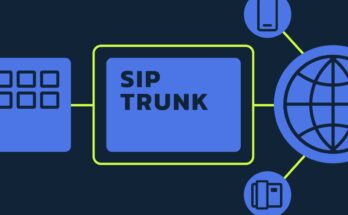Digital adoption is going through a period of rapid change. In the early days of mobile convergence, there were some challenges that stood out. For example, how could businesses make sure employees could easily access company data? Or how can people stay in control of their content and devices? Today, digital adoption is underway at an even faster pace. But it’s not always smooth sailing. Here are five common digital adoption challenges that businesses have faced when implementing digital transformation plans and solutions to digital adoption challenges.
There’s still a lot of confusion out there.
One of the biggest challenges businesses have faced when implementing digital transformation plans and solutions is confusion among employees. Many businesses are experiencing severe digital adoption issues in their existing environments, but don’t fully understand why. Employees often don’t know why their data is stored and processed in different places. This can lead to frustration and stress. This can also lead to employee retention issues unless a clear digital strategy is put in place.
A clear digital strategy spells out the goals of the strategy, the tools needed to reach those goals, and the metrics by which those goals are judged. If employees don’t know why their data is being collected, stored, and processed in a specific place, it’s harder for them to understand and accept the need for change.
People are unresponsive when you try to engage them.
People often feel a bit uncomfortable when someone else is accessing their data. They might feel anxious if they have to take a step back and think about how their data is being used. Making data-driven decisions in a digital environment requires that people have a solid understanding of how the technology works, why it’s being used, and how it affects them. People often appear unresponsive when you try to engage them in an exploratory way. This can be very frustrating. If you want to know what’s happening in an office, think of face-to-face conversations with customers or employees.
But as we increasingly communicate through digital channels, face-to-face communication isn’t always possible. It’s also not practical or possible to have an ongoing conversation with every single one of your customers or employees. That’s where the digital conversation engine powered by AI can help. With the ability to forward messages, get real-time updates, and automatically save conversations, you can address unresponsiveness with a more engaging digital strategy.
Employees are resistant to change.
Anytime you change something, whether it’s the way you record conversations, where you store data, or what you deliver to customers, there’s a chance that some employees will be unhappy about it. It’s an issue that businesses face when trying to adopt new technologies. There are many reasons why employees might be hesitant to change things, such as their position, benefits, and company culture. But there are ways to overcome these obstacles and engage employees in a meaningful way.
First, understand why some employees might be reluctant to change. In many cases, it’s a cultural issue. Some employees might feel too comfortable with the way things are or they might not know how to change things. In some cases, it might be a matter of trust — employees might not feel comfortable giving up their stake in the company or their benefits. You can address these issues in your digital transformation plan. Explain the need for change and why it’s necessary. Invite employees to help you define what’s next. Ask them what they think about your transformation plan. And most importantly, don’t be afraid to ask for their feedback.
What do you do with all that data?
As data-driven businesses, we crave more data. It drives innovation, helps us make better decisions, and can even save our jobs. But how do you collect data when a large portion of your employees may not even have a computer or smartphone? Or, if they do, they might not use it. Fortunately, there are a number of ways to collect data, including in-person interviews, questionnaires, and using smart devices. But collecting data can be challenging when you don’t have the tools. When you have limited digital access, you have to rely on other ways to collect data. This can be time-consuming and complicated. If you have to collect data a lot, or when you have a large organization, this can be a significant drain on your time and energy.
Companies are overwhelmed with options and advice.
Choosing the best technology and implementation solutions can be challenging. In today’s environment, where technology and implementation solutions are constantly changing, it can be difficult to know which technologies to use, and which solutions to choose. As a result, companies waste time and resources choosing the wrong solution. For example, many companies now have a “whole-house” digital transformation strategy.
This means they’ve implemented many technologies, in-house or through third-party providers to support their digital strategy. But these companies don’t clearly understand how they’re working together. This means that the entire strategy is haphazard. It might contain the wrong technologies. Or it might be poorly thought-out. Companies that have poorly defined digital strategies often end up with a fragmented strategy. With a fragmented strategy, there’s a high risk that one technology will fail during implementation. And then you’ll have no way to support that technology moving forward.
Time constraint
Digital transformation is a long-term project. It takes time to make changes, implement new solutions, and understand the impact of those solutions. As a result, many businesses have found themselves in situations where they must quickly decide what to do next. They don’t have time to conduct in-depth analyses, analyze data, and come up with potential solutions to the challenges they face. But in a digital environment, there is no time. How can you effectively decide what to do next? There’s only so much you can do now. The decisions you make now will determine the direction of your business for the long term.
Bottom line
Digital transformation will continue to be a journey. It will not happen in one day or even one month. It’s a process that will take time and effort. But the benefits of a digital transformation are worth the effort. And the opportunity to positively impact your business in the long term.




